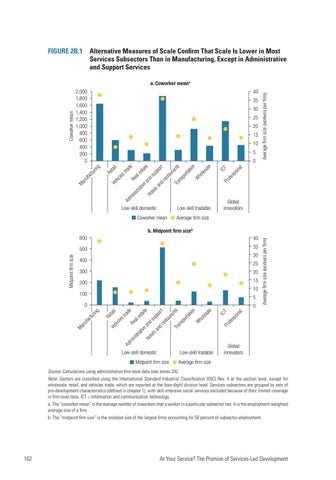FIGURE 2B.1 Alternative Measures of Scale Confirm That Scale Is Lower in Most Services Subsectors Than in Manufacturing, Except in Administrative and Support Services
35 30 25 20 15 10 5
al ss
ion
ICT
ofe Pr
ale
W
ho
les
on ati
ts
ort sp
Tra n
tau
ran
ort pp
Ad
mi
Ho
nis
tel
tra
sa
tiv
nd
ea
nd
res
su
es al
Re
Ve h
Ma
tat e
de tra
es
Re
icl
tur fac nu
tai l
0
Average firm size (workers per firm)
40
2,000 1,800 1,600 1,400 1,200 1,000 800 600 400 200 0
ing
Coworker mean
a. Coworker meana
Low-skill domestic
Low-skill tradable
Coworker mean
Global innovators
Average firm size
40
500
35 30
400
25
300
20
200
15 10
100
5
0
na l ss io
ICT
Pr ofe
ds up
tel sa
Ho
str ati
ve
an
al Re
Ad
mi ni
po nd rt res tau ran ts Tra ns po rta tio n W ho les ale
e es tat
de
es
tra
l tai Re
Ve hic l
Ma n
ufa c
tur
ing
0
Average firm size (workers per firm)
Midpoint firm size
b. Midpoint firm sizeb 600
Low-skill domestic
Low-skill tradable
Midpoint firm size
Global innovators
Average firm size
Source: Calculations using administrative firm-level data (see annex 2A). Note: Sectors are classified using the International Standard Industrial Classification (ISIC) Rev. 4 at the section level, except for wholesale, retail, and vehicles trade, which are reported at the (two-digit) division level. Services subsectors are grouped by sets of pro-development characteristics (defined in chapter 1), with skill-intensive social services excluded because of their limited coverage in firm-level data. ICT = information and communication technology. a. The “coworker mean” is the average number of coworkers that a worker in a particular subsector has. It is the employment-weighted average size of a firm. b. The “midpoint firm size” is the smallest size of the largest firms accounting for 50 percent of subsector employment.
102
At Your Service? The Promise of Services-Led Development

